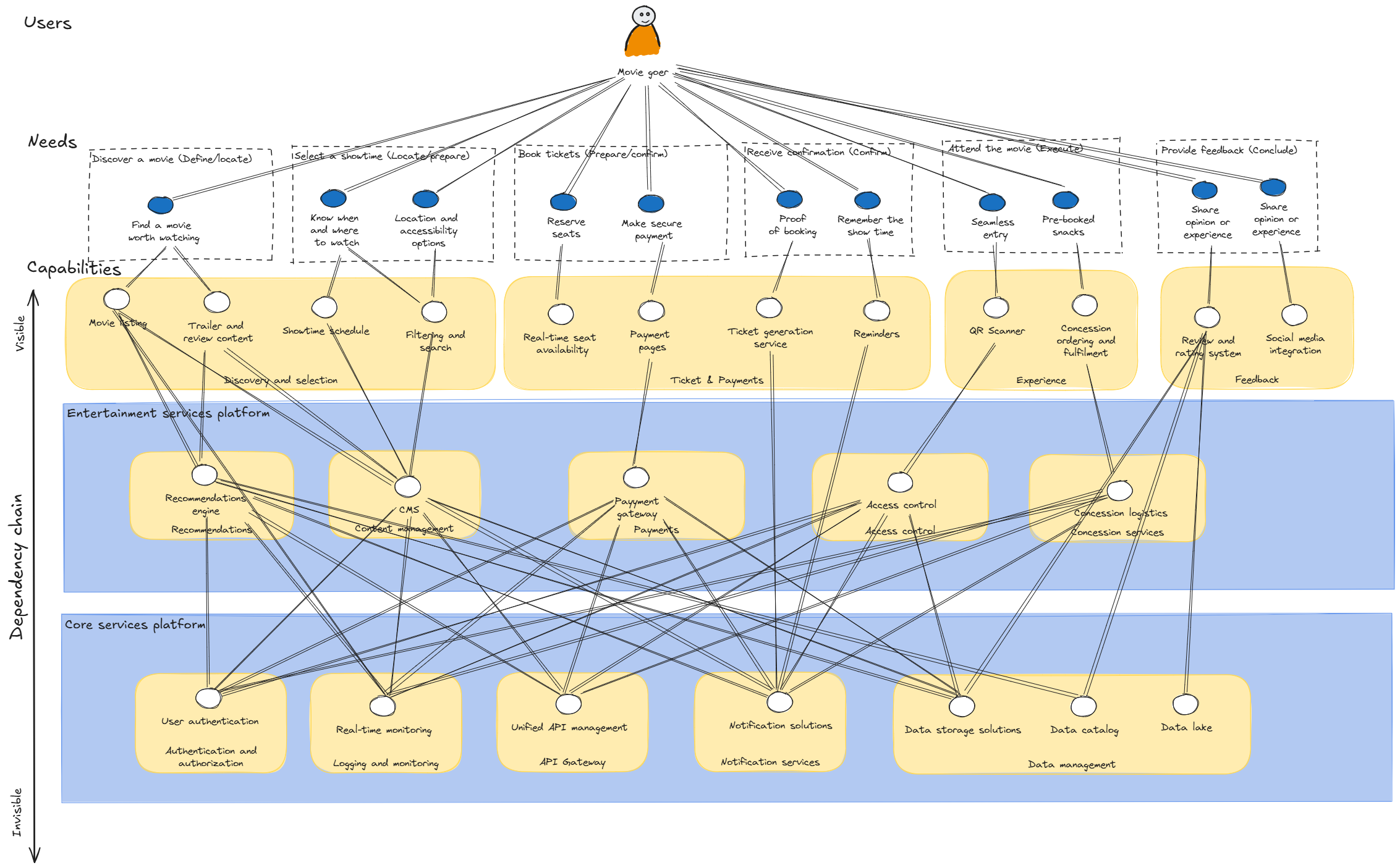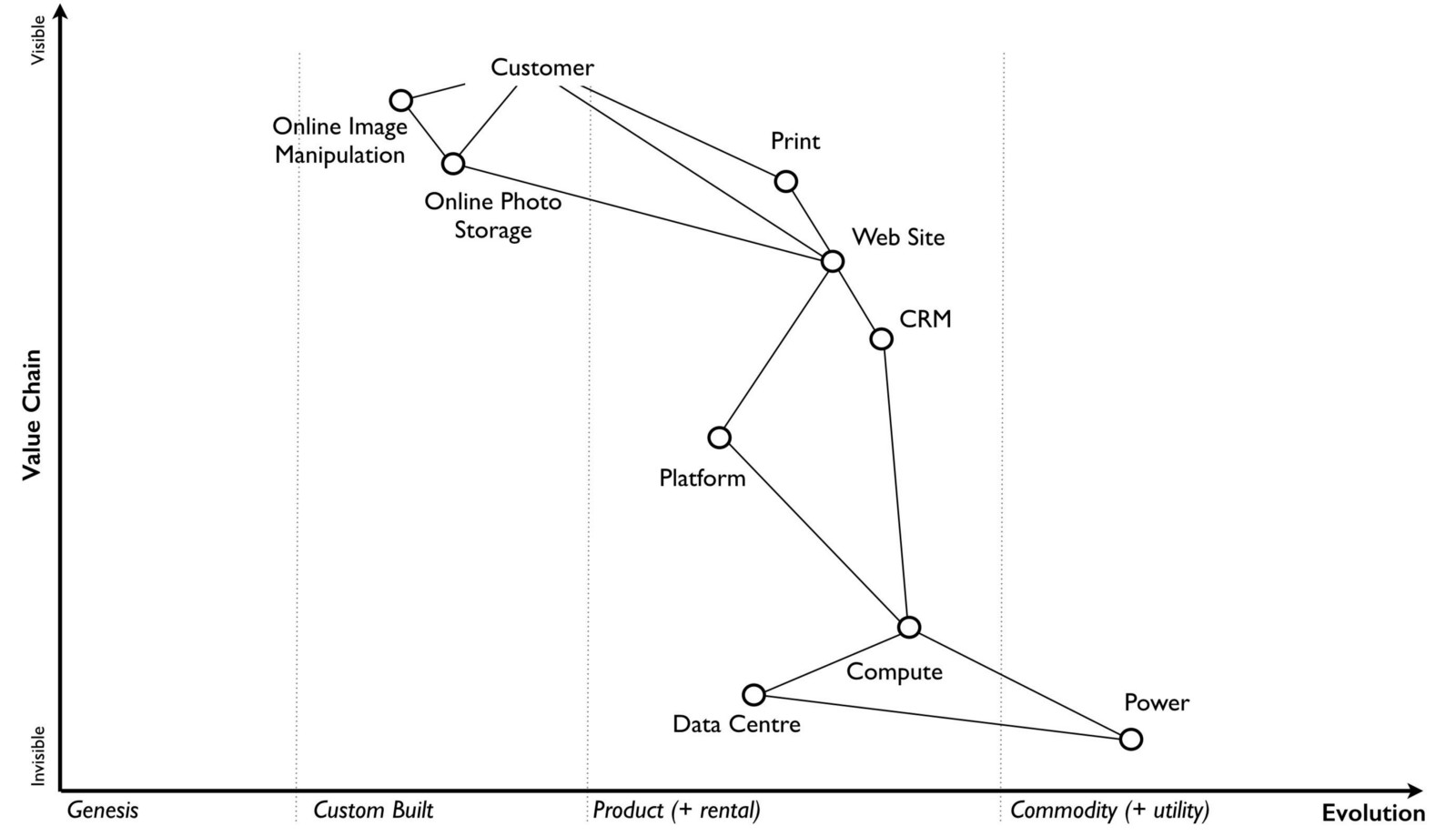Start with your users: An introduction to User Needs Mapping
In today’s fast-paced and ever-changing business landscape, organizations face constant challenges in aligning their teams, structuring their services, and delivering value effectively. Misaligned teams, unclear boundaries, and overloaded communication channels can significantly hinder an organization’s ability to adapt and thrive. This is where User Needs Mapping comes into play.
User Needs Mapping is a straightforward yet powerful technique designed to help organizations identify team and service boundaries that align with user needs. By starting with a clear understanding of who your users are and what they need, you can design your teams and systems to reduce cognitive load, improve flow, and deliver value more effectively. In this article, we’ll explore what User Needs Mapping is, why it’s essential, and how it differs from other frameworks like Wardley Mapping and Domain-Driven Design (DDD).
The challenge of alignment
As organizations grow and evolve, they often struggle to maintain clarity in team responsibilities and communication. Silos form, dependencies multiply, and the cognitive load on teams increases. A common scenario involves teams attending daily standups with dozens of people because it’s the only way to “find out what’s going on.” This chaos not only drains productivity but also obscures opportunities for delivering value.
Traditional approaches to team alignment often fall short because they focus on rigid hierarchies or predefined structures without considering the unique needs of users or the context in which teams operate. User Needs Mapping flips this approach on its head by starting with the users and working backward to define the most effective team boundaries and service structures.
What is User Needs Mapping?
User Needs Mapping is a technique that borrows from Simon Wardley’s Wardley Mapping but removes some of the more perceived complex elements and concepts such as landscapes, climatic patterns, doctrinal principles and leadership stratagems. That is not to say that these are not important, and I would highly recommend exploring them and learning about them because they will be massively helpful in your journey, but they are not required to start with User Needs Mapping.

At its core, User Needs Mapping involves:
- Identifying your users: This includes both external customers and internal stakeholders, such as platform users or operational teams.
- Defining user needs: These are expressed in user-centric language, focusing on verbs (actions) rather than nouns (objects).
- Mapping capabilities to needs: Understanding what your organization must do to meet these needs (creating a value chain).
- Overlaying teams: Mapping teams to the needs and capabilities.
By visualizing the relationships between users, their needs, your organizational capabilities and the teams that are responsible for delivering those capabilities, User Needs Mapping helps uncover opportunities for restructuring teams, clarifying responsibilities, and reducing dependencies.
Why start with User Needs Mapping?
One of the most compelling reasons to adopt User Needs Mapping is its simplicity. Frameworks like Wardley Mapping and Domain-Driven Design are incredibly powerful but can feel overwhelming to teams unfamiliar with their terminology and processes. In fact, Simon Wardley himself has joked that it takes “seven years” to learn Wardley Mapping. User Needs Mapping offers a low-cognitive-load entry point that delivers immediate value without requiring deep expertise in complex frameworks.
The philosophy of “no labels”
A key principle of User Needs Mapping is to avoid leading with labels. Introducing terms like “Wardley Mapping” or “Domain-Driven Design” upfront can intimidate teams and create resistance. Instead, the focus is on the practical steps: Who are your users? What do they need? How can we meet those needs? This pragmatic approach helps teams engage with the process without feeling overwhelmed.
User Needs Mapping in practice
Consider the example of Passenger, a mobile ticketing solutions provider. As the company grew, their teams became increasingly misaligned, and their communication channels overloaded. By applying User Needs Mapping, Passenger identified their users (e.g., bus passengers, operations teams, marketing teams) and their specific needs (e.g., buying tickets, publishing schedules, meeting regulations). This process revealed opportunities to restructure teams around distinct domains such as “tickets and payments” and “journey planning,” reducing cognitive load and improving ownership.
The results? Clearer team boundaries, reduced communication overhead, and a more aligned organization ready to adapt to growth.
The benefits of User Needs Mapping
User Needs Mapping offers several benefits for organizations of all sizes:
- Improved alignment: By starting with user needs, teams can align their responsibilities with delivering value.
- Reduced cognitive load: Simplified processes and clear team boundaries free up mental capacity for innovation.
- Faster flow of change: Clearer ownership of services and capabilities enables quicker decision-making and adaptation.
- Scalability: User Needs Mapping provides a repeatable process for defining boundaries as organizations grow and evolve.
Ready to get started?
User Needs Mapping is not just a technique; it’s a mindset shift. By focusing on users and their needs, organizations can break free from outdated structures and create teams that are purpose-driven, aligned, and ready for the future. Whether you’re a startup looking to scale or an established organization seeking to reduce complexity, User Needs Mapping offers a practical path forward.
In upcoming articles, we’ll dive deeper into the steps of User Needs Mapping, explore real-world case studies, and provide actionable tips to help you implement this powerful technique. Stay tuned!

